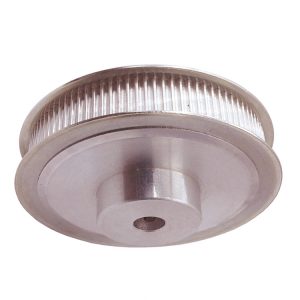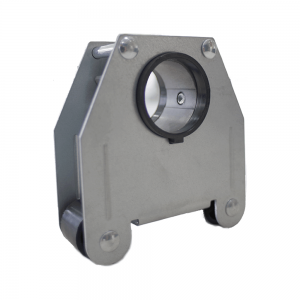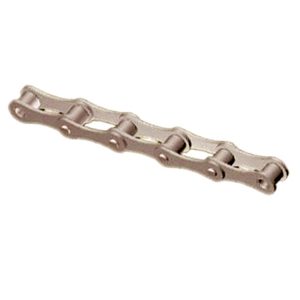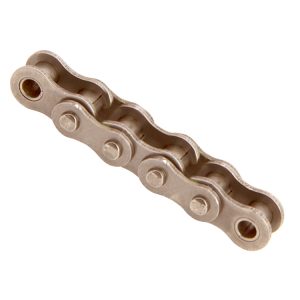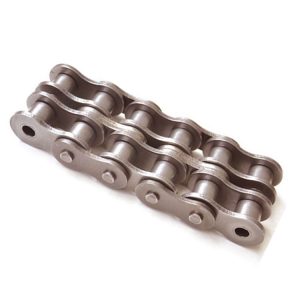Product Description
|
Product Name |
Aluminum Alloy GT Timing Pulley For Printing Packaging Equipment |
|
Material |
Aluminum alloy,stainless steel |
|
Surface treatment |
Natural color anode |
|
Customized service |
Support light customization and logo customization |
|
Remarks |
The default engraving brand name and size of the product. If you need not engraving, please contact the customer service for comments |
| Packaging Details | Carton box with anti-static package,carton plus with wooden case. |
| Main Products | Shaft Parts, Timing Belt Pulley, Gears, CNC Machining Parts, Sheet Metal Fabrication |
| Certifications(2) | ISO9001:2015, IPMS |
| Applicable Industries | Building Material Shops, Manufacturing Plant, Food & Beverage Factory, Farms |
| Supply Ability | 100000 Piece/Pieces per Month |
| Dimension | oem provided |
| Surface finish | anodized |
| Lead Time | 25 days |
| Application | Furniture,cabinet |
| Custom | OEM and ODM services are welcome,we can make cutom LOGO and products according to customer’s requests. |
| Quality control Our | Finished product inspection,Warranty available |
| service | Swiss machining;deburring;lathe/turning;5 axis;micromachining |
| Color |
silver,gold,black,red,bulue,and according to the customer requests. |
/* January 22, 2571 19:08:37 */!function(){function s(e,r){var a,o={};try{e&&e.split(“,”).forEach(function(e,t){e&&(a=e.match(/(.*?):(.*)$/))&&1
| Certification: | ISO |
|---|---|
| Pulley Sizes: | Type E |
| Manufacturing Process: | Casting |
| Material: | Stainless Steel |
| Surface Treatment: | Baking Paint |
| Application: | Chemical Industry, Grain Transport, Power Plant |
| Samples: |
US$ 100/piece
1 piece(Min.Order) | |
|---|
| Customization: |
Available
| Customized Request |
|---|
What is the difference between a fixed and a swivel pulley?
Fixed and swivel pulleys are two common types of pulleys that differ in their design and functionality. Here are the key differences between these two types:
1. Fixed Pulley: A fixed pulley is a type of pulley that is mounted or attached to a fixed point, such as a beam or a ceiling. It does not move or rotate independently of its mounting point. The primary function of a fixed pulley is to change the direction of the force applied to a rope or cable. When a force is applied to the rope or cable passing through a fixed pulley, the load moves in the opposite direction. However, a fixed pulley does not provide any mechanical advantage, meaning it does not reduce the effort required to lift the load.
2. Swivel Pulley: A swivel pulley, also known as a movable pulley, is designed to rotate or swivel on a separate mounting point. It has a built-in mechanism that allows it to move independently. Unlike a fixed pulley, a swivel pulley is capable of changing both the direction and the magnitude of the force applied to the rope or cable. When a force is applied to the rope or cable passing through a swivel pulley, the load moves in the same direction as the applied force. Additionally, a swivel pulley provides a mechanical advantage by distributing the load’s weight over multiple strands of rope or cable, reducing the effort required to lift the load.
In summary, the main differences between fixed and swivel pulleys are:
– Fixed pulleys are stationary and do not move independently, while swivel pulleys can rotate or swivel on a separate mounting point.
– Fixed pulleys change the direction of the force applied to the rope or cable, while swivel pulleys change both the direction and the magnitude of the force.
– Fixed pulleys do not provide a mechanical advantage, while swivel pulleys provide a mechanical advantage by distributing the load’s weight over multiple strands of rope or cable.
Both fixed and swivel pulleys have their specific applications and can be used individually or in combination with each other to achieve desired mechanical functions in various systems and setups.
Can pulleys be employed in agricultural machinery and equipment?
Yes, pulleys can be employed in agricultural machinery and equipment to facilitate various tasks and improve efficiency. They are versatile components that provide mechanical advantage, enable power transmission, and aid in the movement and control of agricultural implements. Here’s how pulleys can be used in agricultural applications:
1. Belt Drives: Pulleys are commonly used in belt-driven systems in agricultural machinery. They are used in conjunction with belts to transmit power from the engine or motor to different components, such as pumps, fans, and cutting mechanisms. By adjusting the size and arrangement of the pulleys, farmers can control the speed and torque of the driven equipment, optimizing its performance for specific tasks.
2. Harvesting Equipment: Pulleys are utilized in various types of harvesting equipment, such as combines, forage harvesters, and balers. They are employed in the cutting and threshing mechanisms to transfer power and drive the rotating components. Pulleys enable the synchronization of different parts, ensuring efficient crop harvesting and processing.
3. Irrigation Systems: Pulleys play a role in agricultural irrigation systems, particularly in the operation of water pumps. They are incorporated into the pump drive systems and help transfer power from engines or motors to the pump impellers. By using pulleys, farmers can adjust the pump speed and flow rate to meet the irrigation requirements of different crops and soil conditions.
4. Hay and Forage Equipment: In hay and forage equipment, pulleys are utilized to drive various components, such as cutting blades, conditioning rolls, and feed mechanisms. They enable the transfer of power from the tractor or engine to these components, facilitating efficient cutting, processing, and feeding of hay and forage materials.
5. Conveyor Systems: Pulleys are employed in conveyor systems used in agriculture for material handling tasks. They help drive the belts or chains that transport crops, grains, or other agricultural products. Pulleys ensure smooth and controlled movement, enabling the efficient transfer of materials between different stages of processing, storage, or transport.
6. Livestock Equipment: Pulleys find applications in livestock equipment, such as feed mixers, milking machines, and ventilation systems. They are used to transfer power and facilitate the movement of various components involved in these systems. Pulleys contribute to the smooth operation and automation of livestock processes, enhancing productivity and animal welfare.
7. Equipment Adjustments: Pulleys are also employed in agricultural equipment to provide adjustability and flexibility. They enable the adjustment of cutting heights, belt tension, and machine settings, allowing farmers to adapt the equipment to different crops, field conditions, or operational requirements.
Overall, pulleys play a significant role in agricultural machinery and equipment, enhancing power transmission, enabling precise control, and improving the overall efficiency of agricultural operations. Their versatility and adaptability make them valuable components in various agricultural applications.
Can pulleys be customized for specific applications?
Yes, pulleys can be customized to meet the specific requirements of various applications. Customization allows pulleys to be tailored to specific sizes, shapes, materials, and performance characteristics. Here’s a detailed explanation of how pulleys can be customized:
1. Size and Shape: Pulleys can be customized in terms of their size and shape to fit the specific space and layout constraints of the application. This includes variations in diameter, width, groove configuration, and overall design. Custom sizes and shapes ensure optimal fit and compatibility within the system, allowing for efficient and effective load distribution and lifting.
2. Materials: Pulleys can be customized based on the materials used for their construction. Different materials offer varying properties such as strength, durability, weight, and resistance to corrosion or wear. By selecting the appropriate materials, pulleys can be customized to withstand the specific operating conditions of the application, including temperature, humidity, and exposure to chemicals or harsh environments.
3. Bearing Systems: The bearing system of a pulley can be customized to suit the requirements of the application. Different bearing types, such as ball bearings or roller bearings, can be selected based on factors like load capacity, rotational speed, and desired friction characteristics. Customizing the bearing system ensures smooth rotation, reduced friction, and improved overall performance of the pulley.
4. Coatings and Surface Treatments: Pulleys can be customized with various coatings and surface treatments for enhanced performance. For example, pulleys used in applications that involve high temperatures may benefit from heat-resistant coatings. Pulleys used in environments with corrosive substances can be coated with protective materials to prevent corrosion. Surface treatments such as polishing or plating can also be applied to reduce friction, improve wear resistance, or provide specific surface properties.
5. Load Capacity and Performance: Pulleys can be customized to accommodate specific load capacities and performance requirements. This includes determining the number of pulleys in a system, selecting the appropriate pulley ratios, and configuring the pulley arrangement to achieve the desired mechanical advantage. Customization allows pulleys to be optimized for the specific load requirements, ensuring efficient load distribution and lifting.
6. Integration with Systems: Pulleys can be customized to seamlessly integrate with existing systems or equipment. This involves designing pulleys with compatible interfaces, mounting options, and connection methods. Customization ensures proper alignment, easy installation, and smooth operation when incorporating pulleys into the overall system.
7. Specialty Applications: In certain specialized applications, pulleys can be customized to meet unique requirements. This may include designing pulleys for extreme operating conditions, such as high speeds or heavy loads, or developing pulleys with specific features like built-in sensors or locking mechanisms. Customization allows pulleys to be tailored to the specific needs of niche applications.
Customization of pulleys is typically carried out by manufacturers or suppliers who have the expertise and capabilities to design and produce pulleys according to specific customer requirements. This allows for the optimization of pulley performance, compatibility, and efficiency in a wide range of applications.
editor by CX
2024-04-24










